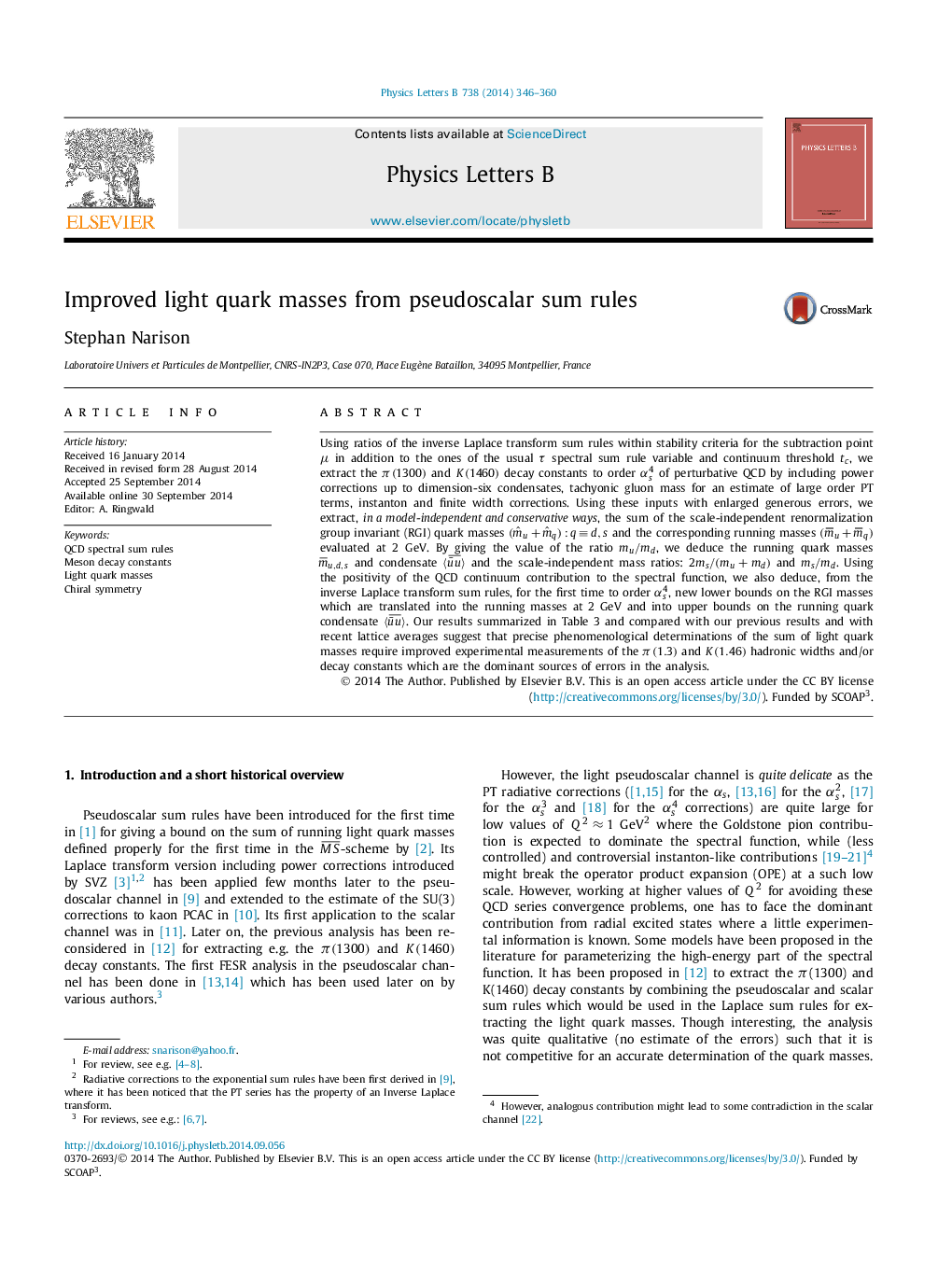| Article ID | Journal | Published Year | Pages | File Type |
|---|---|---|---|---|
| 1850622 | Physics Letters B | 2014 | 15 Pages |
Abstract
Using ratios of the inverse Laplace transform sum rules within stability criteria for the subtraction point μ in addition to the ones of the usual Ï spectral sum rule variable and continuum threshold tc, we extract the Ï(1300) and K(1460) decay constants to order αs4 of perturbative QCD by including power corrections up to dimension-six condensates, tachyonic gluon mass for an estimate of large order PT terms, instanton and finite width corrections. Using these inputs with enlarged generous errors, we extract, in a model-independent and conservative ways, the sum of the scale-independent renormalization group invariant (RGI) quark masses (mËu+mËq):qâ¡d,s and the corresponding running masses (m¯u+m¯q) evaluated at 2 GeV. By giving the value of the ratio mu/md, we deduce the running quark masses m¯u,d,s and condensate ãu¯u¯ã and the scale-independent mass ratios: 2ms/(mu+md) and ms/md. Using the positivity of the QCD continuum contribution to the spectral function, we also deduce, from the inverse Laplace transform sum rules, for the first time to order αs4, new lower bounds on the RGI masses which are translated into the running masses at 2 GeV and into upper bounds on the running quark condensate ãu¯u¯ã. Our results summarized in Table 3 and compared with our previous results and with recent lattice averages suggest that precise phenomenological determinations of the sum of light quark masses require improved experimental measurements of the Ï(1.3) and K(1.46) hadronic widths and/or decay constants which are the dominant sources of errors in the analysis.
Related Topics
Physical Sciences and Engineering
Physics and Astronomy
Nuclear and High Energy Physics
Authors
Stephan Narison,
